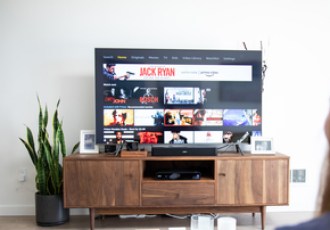We recommend these products based on an intensive research process that's designed to cut through the noise and find the top products in this space. Guided by experts, we spend hours looking into the factors that matter, to bring you these selections.

The way we consume TV has changed — no one is tuning in to their favorite TV shows at specific times anymore. Instead, people are watching TV through their streaming devices or recording them on their digital video recorders (DVRs) to be watched later, at their convenience. With a DVR, you can watch when you want to watch, and you can skip the commercials.
Most people rent their DVRs from their cable television providers. However, there are better, more flexible, and more affordable options out there as well as a host of options for cord-cutters who want to record shows from their local broadcast TV stations.
No matter what kind of TV broadcasts you want to record, there are some great options out there in the DVR world. There are definitely a few to avoid, as well.

Not sure what to look for in a DVR or how to narrow down your search? Start by asking yourself the following questions:




















So what separates the good DVRs from the best DVRs? It comes down to a few key features.
Despite the fact that broadcast and cable have not yet adopted the 4K standard, there are still DVRs out there that support 4K — usually because they have streaming apps with 4K content on board as well. If you are planning to use your DVR as a 4K streaming box, be sure to pick one up with 4K support.
One of the big differentiators between the various digital video recorders on the market is how many tuners they have — that is, how many shows they can record at once. Consider how many of your favorite shows air at the same time or if you’ll want to simultaneously stream your DVR recordings to another device, like a tablet. Every activity requires a tuner, so you will need to make sure the DVR you buy has enough. Most DVRs have a minimum of two tuners. However, if it is within your budget, we recommend opting for one with at least four tuners.
You can find DVRs that have built-in apps for Hulu, Netflix, Amazon Prime, and other favorites.
DVRs all have hard drives, and the bigger the hard drive, the more episodes you can store on it. Our general advice is to buy more space than you think you will need because it’s better to have extra space than it is to run out. We recommend a minimum of 500GB of space.
With a DVR that’s connected to an over-the-air antenna, you’ll be able to record your favorite shows in crystal-clear HD that will look significantly better than anything you’ll see from a cable box.
Some DVRs solve the storage dilemma with USB or eSATA ports, so you can bring your own flash drives or external hard drives to add more space. Using external hard drive or flash drive storage is perfect for people who just can’t bear to let some shows go by without recording them, or those who simply watch everything. If you are looking at DVRs that work with external hard drive or flash storage, keep in mind that you will not have the functionality to transfer your DVR recordings to a computer due to file limitations and copyright restrictions.

Entry-level DVRs usually cost between $150 and $200. In this price range, you will find DVRs for over-the-air TV, but they often have clunky interfaces or require you to spend more and bring your own file storage space. Some CableCARD™-compatible DVRs can be found in this price range.
DVRs that cost between $200 and $500 tend to pull out all the stops. They’ve got built-in apps and tons of tuners, and they often support streaming to mobile devices — even if they’re not on your WiFi network. If you record everything, binge everything, and rewatch everything (or if you’re a home theater nut who wants the optimum viewer experience), the best DVRs for you are likely the ones in this price range.

If you have a Fire TV stick and a Tablo DVR, you can use a free app (available through Amazon) to watch live TV as well as pre-recorded TV shows in HD.

A. An hour of high-definition programming will usually consume anywhere between 1.5GB and 5GB. The size will depend on the quality of your recording — for example, most DVRs allow you to record in lower resolutions to conserve space, but if you want to see every original pixel, your recordings will be on the large side.
A. Most DVRs include support for streaming recorded content to other devices. In most cases, it’s usually limited to streaming on your local network, so you will need to make sure both your DVR and the device you want to watch content on are on the same network. Some high-end DVRs support streaming from anywhere, so you can stream to your phone when you’re on the go or stream to your laptop while you’re at work (not that we encourage that sort of thing).
A. Not yet. The technical standards for antenna broadcasts are currently based on the Advanced Television Systems Committee (ATSC) 2.0 standard. Testing and planning are underway for the upcoming new standard: ATSC 3.0. This new standard will support 4K broadcasts. However, there is no current timeline for when it will be implemented.
Get emails you’ll love.
Learn about the products you’re wondering if you should buy and get advice on using your latest purchases.
